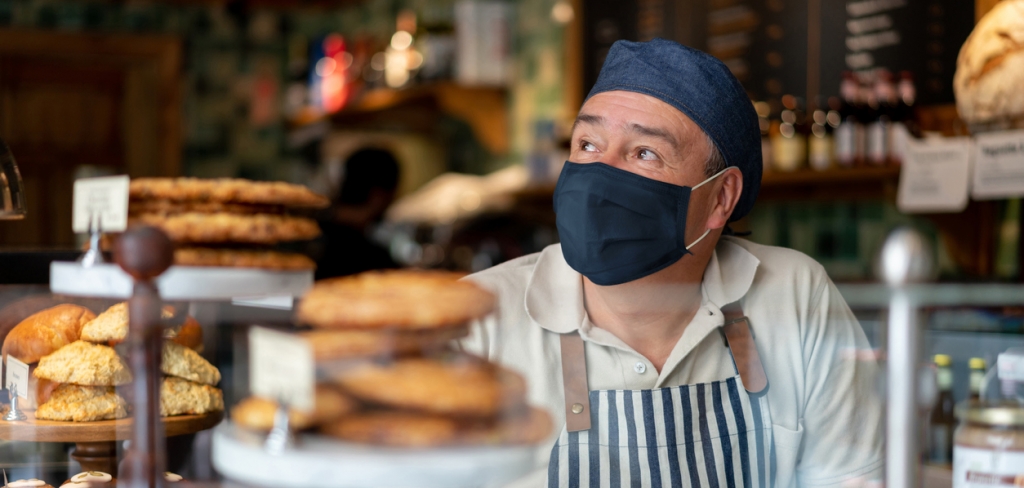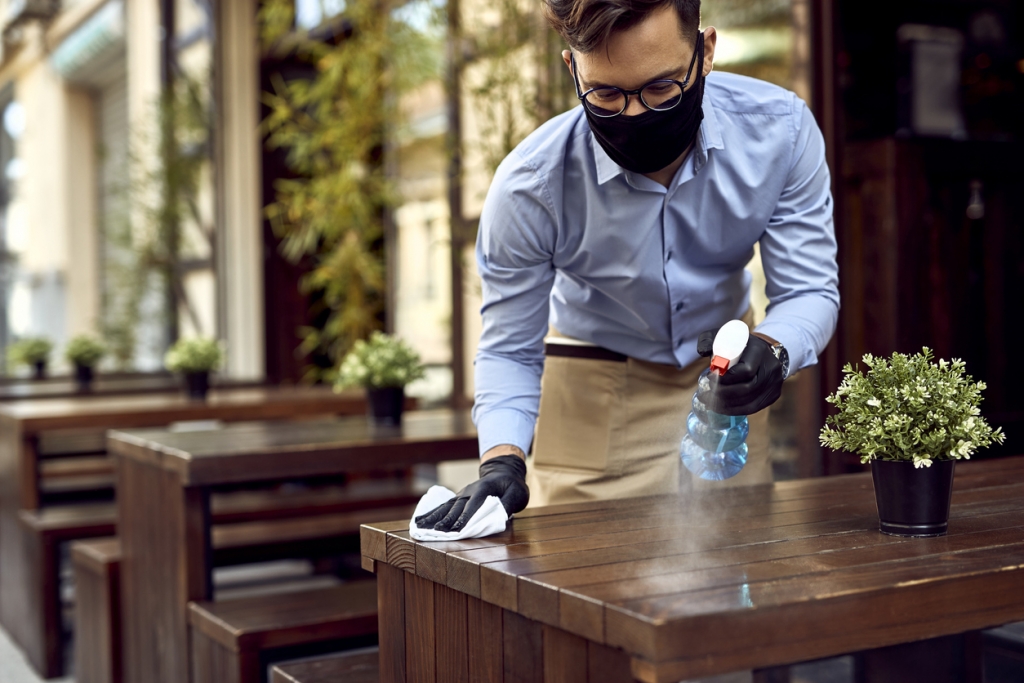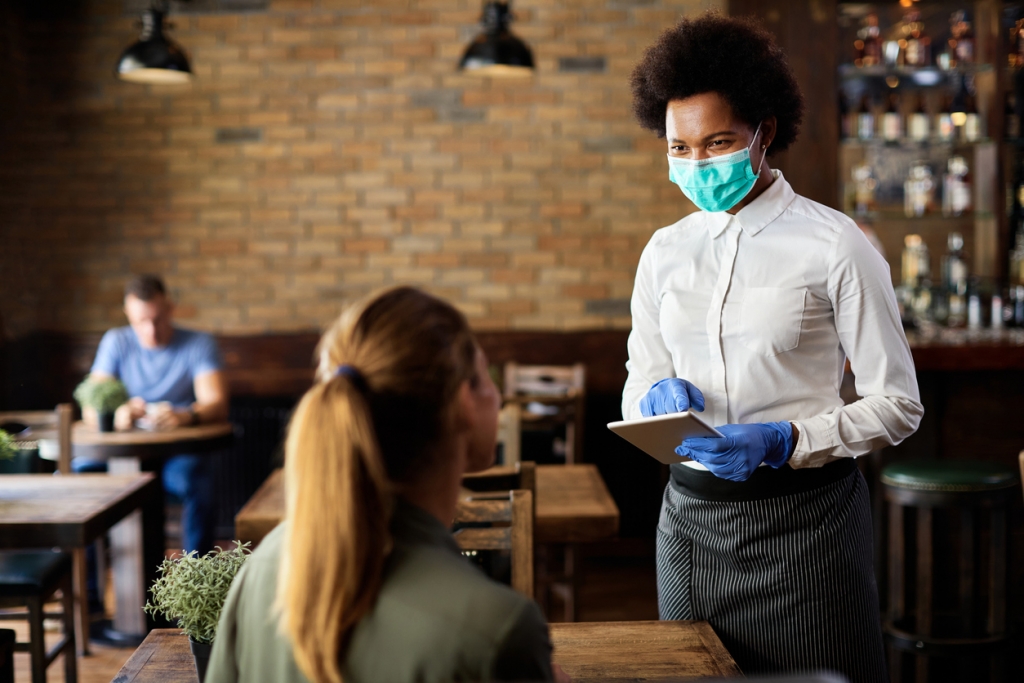So, we know the COVID-19 scourge still persists across the globe, however, governments have started easing lockdown restrictions and slowly allowing restaurants to get back to some form of dine-in service.

This is great news for an industry that has taken the brunt of the suffering when determining how to best fight off the rise in cases. It doesn’t really matter if you agree or disagree with how any of this pandemic has been handled, it’s about coming out of this ready to welcome back people who are slowly feeling more comfortable. The fact is that some customers and operators alike are still concerned about how contagious COVID-19 can be in public places and this isn’t going to change anytime soon.
Even with vaccinations slowly making their way through the populace and while cases seem to be going down, the safety and sanitation of your restaurant will still be under the microscope for a long time to come. That includes sanitization, employee health monitoring, personal hygiene, and social distancing
One thing I am sure of is the business will be coming back. And the more prepared you are, the faster you will return back to the success you were accustomed to, prior to the pandemic. Now while the timeline for a full reopening is unknown, you can start planning for your “grand reopening”. As life begins to establish a sense of normalcy post-crisis, here’s a list of some things to consider preparing:
1. Leaner and Meaner Menus
Chances are that the lockdown will have affected your suppliers, and many crucial ingredients for your dishes may not even be available at the moment. With possibly less inventory, I recommend that you streamline your menu to those signature items that you’re known for and can still get from your vendors. Even more important, the execution of your concept will be critical in the early going, so a smaller menu gives you the advantage to ensure a high-quality guest experience.
Evaluate your profit and loss statements and identify where your restaurant is making the most money. Rid yourself of the non-essentials, get back to the basics, and work smart.

2. Clean and Sanitize Your Space
Whether you have been out of your space for weeks or you have been open for takeout and/or outdoor dining, the first step you’ll want to take towards opening back up your dining room, is to thoroughly clean and sanitize your restaurant. A few tips:
- Be sure to clean the back-of-house and the front-of-house using a restaurant cleaning checklist, so you don’t miss anything
- Clean and sanitize seldom-touched areas along with your high-touch areas.
- Clean under and in between items, such as countertop equipment and point-of-sale equipment.
- Use food-safe cleaners in food-prep areas and on any surfaces that will come in direct contact with food.
- Wash, rinse, and sanitize food-prep tools and smallwares before using them again.
- Clean and sanitize shelving units before restocking.
- Thoroughly clean and disinfect all restroom areas.
- Sweep, vacuum, and mop the floors
- Use a third-party cleaning company to do an initial detailed cleaning
Once you have completed a deep cleaning of all the spaces in your restaurant, create a rigid cleaning schedule for your staff to follow once you are open to the public.
4. Offer Safe and Contact-Free Services

Before opening up, it’s crucial that you’re aware of local laws and regulations regarding re-opening. Start by enforcing a no-contact protocol, so you can reduce interpersonal contact and make your customer experience safe and secure. Here are a few pointers to help you do that:
- Use Cashless Methods For their safety and convenience, enable delivery and payment services that allow customers to pay without cash, as well as choose when and how their order should be delivered.
- Offer Disposable Menus Disposable menus are a great sanitary alternative to traditional ones. They are cost-effective and reduce the likelihood of contamination – buy disposable menus in bulk and recycle them.
- Use Disposable packaging for Condiments Take additional precautions by removing reusable items such as ketchup bottles and salt and pepper shakers. Replace these with condiments in packets that customers can dispose of after touching them.
- Allow Limited Entry Abide by local guidelines that might include opening your restaurant to limited capacity to test out the waters and keep customers as far away from each other as possible. Also, depending on your local regulations, expand restaurant seating to ensure as much space as possible. Keep customers from congregating in waiting areas by adopting a reservations-only business model.
- Protect Your Employees Be open and transparent with your employees – tell them about the changes in your operations and use additional measures to keep your employees safe.
4. Have a Marketing Plan for Reopening
Given the unpredictable nature of circumstances today, you need to promote and market the event.
Your audience needs to know that you are back in business. A solid marketing plan can renew consumer confidence in your brand and inform customers about the services you are providing.
The chances are that your patrons are tired of sitting around at their homes, so send out emails, revamp your social media pages, put up the new menu and deals on your website, and do all else you can to announce the reopening of your restaurant.
More than that, assure customers that you’re taking every measure within your means to provide them with safe, clean food. One way to build their trust is to market your cooking processes, packaging, and delivery options and that you’re taking risks seriously.
In these uncertain times, there are some people that will have a difficult time trusting any dining establishments. You still need their business. Openly communicate the actions you are taking to make your venue is safe. Reassure customers that you regularly engage in all safety precautions.
5. Promote Gift Cards
Sixty-five percent of gift card recipients spend 38 percent more than the value of the gift card.
The revenue from gift cards will help you keep your business afloat, allowing you to make use of cash now rather than waiting for customers to come in. Look back at some of the past promotions you handled with gift cards and offer the same or similar deals to your customers.
6. Hire and Train your Staff

Chances are that your sense of normal will change following a crisis, so it is
important that your staff is trained to adapt to the situation and practice the changes that you have put in place before you open.
- Hire additional staff if needed to help you keep up with the soon-to-be-increasing demand, as well as to ensure sanitation protocols are at standard. Unfortunately, you will need to make an investment PRIOR to the business coming back.
- Re-train staff on new cleanliness and social distancing practices, relative to the indoor dining.
- Enforce frequent handwashing and glove-wearing where necessary to prevent the spread of contagions.
- If masks are worn, ensure your staff knows how to properly use them.
- Require employees to be healthy when reporting to work. Make sure they know when to stay home and how long they must remain home if they feel ill.
- Provide pre-work temperature screenings if necessary.
- Train staff on new and contactless in-house methods for interacting with customers.
- Make sure your staff has the appropriate food handler’s licenses and that those licenses are up to date.
7. Be Ready for an Inspection
- Contact your local health department to find out any inspection requirement updates that have been added since the crisis.
- Clearly identify your plan to your staff during training so they are ready for an inspection.
- Create a cleaning schedule and a social distancing plan that you can show your inspector when they come.
8. Check Your Food & Bar Inventory
For your restaurant to get rolling again you’ll want to make sure your food and bar inventory is fresh and ready to be incorporated back into your menu, where applicable.
- Discard any expired and out-of-date food, or food/liquor that may have been damaged by pests.
- Cross-reference your stock with your intended menu and form a shopping list.
- Contact your typical sources and vendors to ensure that they have enough supply to meet your needs.
9. Ease Into Reopening
It may be tempting to go right back into it full swing once you get the okay to reopen, but easing into your reopening will set your business up for success in the long run and keep your customers safe.
- You may want to host a soft opening with friends and family to try out any new menu items and test mitigation practices.
- Limit the number of tables in your dining room and reduce the number of dine-in customers by taking reservations and call-ahead customers. Reduce party sizes you accept in your dining room to retain social distancing practices.
10. Make a Good Impression

Your main priority following a crisis is to have a smooth reopening and make sure that your customers feel comfortable becoming patrons of your business again.
- Maintain contact with your customers through the reopening process and give them a behind-the-scenes look at what you’re doing to ensure your space is safe via social media, newsletters, or website posts.
- Make sure that your customers are treated with care and respect when they are in your building. Train your staff to try and remember names and repeat orders to form a relationship with regulars.
- Advertise the extra steps you are taking to keep your business clean and your customers safe on your website and with fliers in your business.
- Ensure that your cook times and delivery times are speedy and professional.
While you’re in a crisis, it is hard to visualize life returning to normal. However, it is critical to form a plan early so you can make adjustments along the way and be ready to get your restaurant back in a groove as soon as possible.
